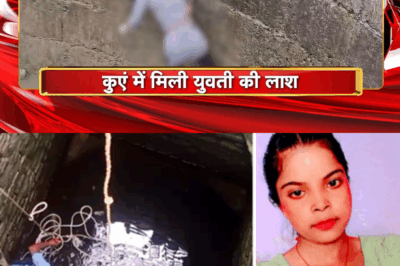Prayagraj Under Siege: Rising Ganga and Yamuna Cause Devastating Floods, Thousands Displaced and City Paralyzed
Prayagraj, the historic city at the confluence of the Ganga and Yamuna, now faces one of its gravest crises in a decade as both rivers have surged far above the danger mark, unleashing catastrophic floods across the region. The very sands and banks that only months ago hosted millions of pilgrims and the grand spectacle of the Mahakumbh are now submerged beneath furious floodwaters, transforming once-thriving neighborhoods and sacred ghats into zones of desperation. Scores of villages and entire colonies are underwater. Social media is flooded with haunting images: families scrambling from their homes, clutching children overhead, wading through chest-deep water, seeking shelter wherever dry ground remains. According to the latest government data, the Ganga was recorded at 85.49 meters in Phaphamau and 84.81 meters in Chhatnag by 8 a.m. Sunday, while the Yamuna peaked at an alarming 85.84 meters at Naini—well above the officially designated danger mark of 84.738 meters. Water levels continue to rise, swelling 12 centimeters every four hours in the Ganga and 10 centimeters in the Yamuna, submerging over 61 villages and urban wards, devastating an estimated one lakh families, and leaving thousands of homes inundated.
Major localities such as Baghara, Salori, Shivkuti, Rajapur, Ashok Nagar, Nivada, Bailey, and Kachhar are among the worst hit, their streets and interiors overtaken by water that shows no sign of receding. Last Saturday, a breach near the gate of Mumfordganj School caused panic until local authorities could shore up the leak with sandbags. Floodwaters steadily inched towards the city’s posh areas, sparking urgent action. Vulnerable ghats, including those traditionally used for cremations, are now underwater, forcing grieving families to perform last rites on the streets or postpone them altogether. Several smaller rivers—Tons, Sasur Khaderi—have joined the onslaught, adding to the complexity. Authorities report that water has now infiltrated Jhoosi, Badra, Sunauti, Hetapatti, and Mumfordganj, with many families stranded on rooftops, and road connectivity across large pockets of the city lost. Thirteen government relief camps, including prominent ones at Annie Besant School, Mahboob Ali Inter College, and St. Joseph’s Girls Wing, have taken in more than 10,000 displaced people. Complaints abound, however, about facilities—food supplies are inconsistent, with some 250 refugees at Mahboob Ali receiving only 75 breakfast packets and late meals, and anger simmering over hygiene and medical arrangements.
Health and civic officials have ramped up operations in response. The medical department has set up camps, distributed nearly 1,100 ORS packets and over 7,500 chlorine tablets, and treated more than 500 patients for water-borne illnesses. Civil defense and local police patrol the streets in boats and perform nightly fogging to try to contain the outbreak of disease. District officials say eighteen more temporary police outposts—including dedicated posts for women—have been established, and local counselors have been given direct lines to the NDRF and boatmen for rapid assistance. Yet the magnitude of the crisis stretches every system to the limit. Over 30 boats have been deployed for rescue, with 10 more on standby for emergencies. The National and State Disaster Response Forces (NDRF, SDRF) remain on high alert and have already evacuated hundreds to safety—but hundreds more remain marooned as new breaches and water surges are reported daily.
The flood’s fury is fueled by the combined impact of widespread and sustained rainfall across Uttarakhand, western Uttar Pradesh, Madhya Pradesh, and Rajasthan. The Ganga is swelled with runoff from Uttarakhand and western UP, the Yamuna by the raging waters of the Chambal, Ken, and Betwa tributaries. In Dholpur, Chambal itself flows almost a meter above danger level, directly amplifying the downstream nightmare. According to the irrigation department, the Ganga is rising at more than four centimeters per hour at major gauges, a relentless pace matched by the Yamuna. Meteorological forecasts warn of continued heavy rainfall for at least 24 more hours, compounding fears that water levels may surpass those recorded in the catastrophic floods of 2013 and even 1978, when the rivers peaked above 88 meters and left a scar on the city’s memory.
The indirect impact is felt throughout society: more than two dozen schools are shut, education for thousands of children abruptly halted. Students preparing for competitive exams are being forced to leave city lodges and return to their villages, their studies disrupted and their futures uncertain. Small businesses, vendors, and daily wage earners in the floodplain have lost their livelihoods overnight. Authorities have established eighty-eight flood posts and run a 24/7 control room, but the slow pace of relief and the overwhelming scale have left many desperate. Survivors complain of delays in distribution, subpar or insufficient food, and overwhelmed medical staff. Even as fogging continues, the fear of water-borne epidemics and mosquito-borne illnesses grows by the hour.
Despite intense pressure, local officials say work continues round the clock to stabilize the situation, promising increased resources and improved camp conditions in coming days. Notices have been issued to underperforming food suppliers, and a reshuffle of relief agencies is reportedly underway to expedite help. As the situation evolves, the city is waiting anxiously: if water continues to rise, Prayagraj could soon relive the horrors of previous disasters, confronting a humanitarian challenge reminiscent of the greatest floods in living memory.
At heart, this tragedy reveals the city’s vulnerability—even as it welcomes the world for grand pilgrimages and religious fairs, Prayagraj remains at the mercy of two mighty rivers whose rage can erase entire districts overnight. For now, families cling to hope on higher ground, praying for the rain to end and the floodwaters to recede, while authorities brace for more hardship to come and the specter of fresh rainfall looms on the horizon. The question hangs in the air: will Prayagraj endure, or will the floods deepen until history repeats itself in devastation?
News
Public Meltdown at Movie Screening: The Stunning Fall–Out Between Cannes Model Ruchi Gurjar and Director Karan Singh Chauhan
Public Meltdown at Movie Screening: The Stunning Fall–Out Between Cannes Model Ruchi Gurjar and Director Karan Singh Chauhan Introduction In…
The Untold Story of Priya Gill: Bollywood’s Lost Star Who Vanished From the Spotlight
The Untold Story of Priya Gill: Bollywood’s Lost Star Who Vanished From the Spotlight Introduction Some stars shine so brightly,…
Shrouded in Mystery: The Tragic Death of Monika Banjara in Vidisha
Shrouded in Mystery: The Tragic Death of Monika Banjara in Vidisha In the quiet heartland of India, where everyday life…
Chaos in the Rain: How a Simple Moment Became a Viral Lesson in Compassion and Caution
Chaos in the Rain: How a Simple Moment Became a Viral Lesson in Compassion and Caution In India, the monsoon…
Chandrachur Singh: The Bollywood Star Who Disappeared, Then Staged a Stunning Comeback
Chandrachur Singh: The Bollywood Star Who Disappeared, Then Staged a Stunning Comeback The 1990s in Bollywood saw an explosion of…
Urfi Javed: The Bold Decision to Dissolve Lip Fillers After 9 Years—A Lesson in Self-Acceptance and Social Media Transparency
Urfi Javed: The Bold Decision to Dissolve Lip Fillers After 9 Years—A Lesson in Self-Acceptance and Social Media Transparency In…
End of content
No more pages to load










